I gave up buying expensive sunglasses years ago, when I kept losing them. But I do care about getting good protection. Fortunately, having shepherded at least four different sunglass tests onto the pages of Practical Sailor, I’ve learned that you don’t need to spend a fortune to get a good pair of shades that will protect your eyes and meet nearly all of your on-the water needs. With summer in full swing, I thought a summary of our past findings would be helpful for those of you who—like me—just watched as another pair of drug store sunglasses descended into the murk beneath your boat slip.

Health concerns
Sunglasses provide important protection against eye lens damage from ultraviolet rays. Among the ailments attributed to UV are cataracts, macular degeneration or snow blindness, and cancer of the eye and eyelid. Prolonged exposure can also create painful “sunburn” on the cornea. In addition, constant exposure to wind, dust and snow can lead to a condition known as pterygium, a growth of cells between the eyelids and the cornea that requires surgical correction.
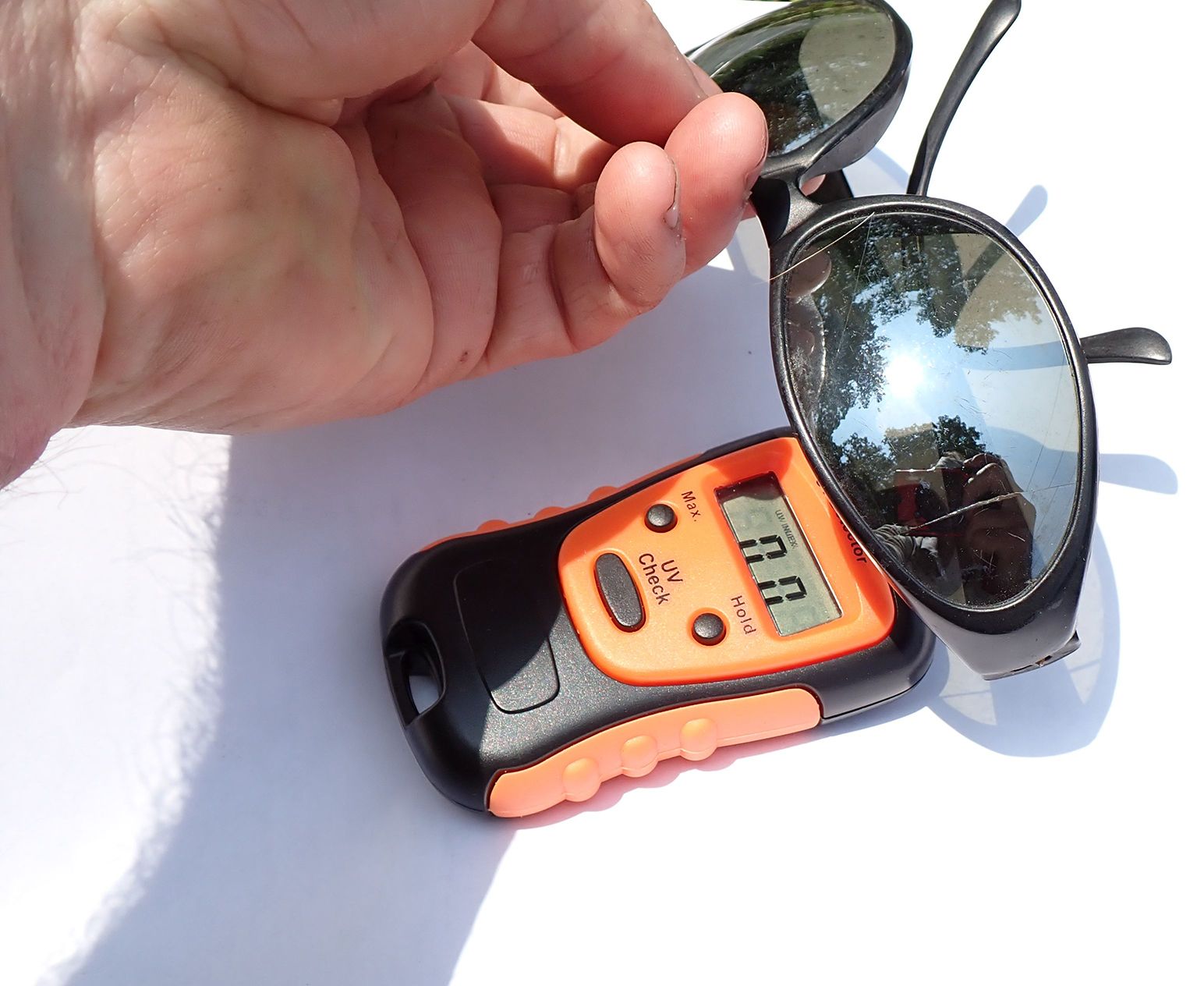
Standards
Although it is not always clear from labeling, there are voluntary standards from the American National Standards Institute (ANSI) that govern levels of UV protection. Look for what ANSI calls special-purpose lenses, which provide the best protection, blocking at least 99% of UVB and 60% of UVA. Be aware that the industry is essentially self-policing and cheap glasses are mass-produced in foreign countries under no regulatory supervision; eyeglasses with dubious looking “100% UV Protection” stickers at your local convenience might not live up to these claims. Also, there’s no standard place on the face to measure the UV; some measurements are made directly in front of the lens, which ignores rays that may bend around the frame to the eye.
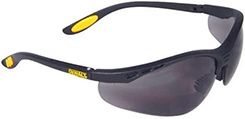
Fit
While the quality of the lens is paramount, design and fit also are important. Eyes need protection from overhead light as well as light reflected from the water, your boat, and other boats. A snug, form-fitting design best blocks this incidental light. A curved, wraparound design blocks rays without interfering with peripheral vision—which is essential for working on deck. Distance between lens and eye should be minimal, but not so close that your eyelashes brush the lenses. We suggest that prospective buyers carefully try on many makes and models to find the right fit.
Lens Material
For all practical purposes, lenses come in two flavors: glass and plastic. Many wearers favor plastic lenses because they are lighter and cheaper as well as more durable than their glass counterparts. Because they resist shattering, they are safer than glass in active sports. Their shatter resistance also permits thinner lenses.
Glass lenses, on the other hand, offer better optics and are less susceptible to scratching, although some plastic lenses have scratch-resistant coatings. Glass is also used for photochromatic lenses, which darken or lighten in response to changes in brightness. (We’ve not yet found a photochromatic lens that adjusts quickly enough to be practical on a boat). Some brands we have tested offer replaceable lenses for switching.
Here’s a quick comparison of the most common lens materials:
Polycarbonate lenses: very high impact resistance, can be thin and light, good optics.
CR-39: good optics, comfortable and lightweight, common for prescription.
Glass: Clear, crisp vision but can be heavy, very scratch-resistant.
Propionate/acetate: thin and light lenses, not for prescription.
NXT: polyurethane, very impact resistant, good optics.
Trivex: impact resistant, good optics, not available in polarized.
SR-91: impact resistant, good optics.
The best lens material often depends on how the glasses are to be used (or abused). Combining durability with low cost, polycarbonate generally offers best bang for your buck.

Light Transmission
Manufacturers also label their glasses by the amount of light transmission allowed. Ideally, at least 70% of available light should be filtered out. Our testing has focused on lenses that allowed between 8% and 18% of light of transmittable light, and found anything above 15% to be inadequate for full time use the water. The more opaque 8% lenses are good for bright sunny days or snow sports; 10-14% for cloudy-day reef spotting. In general, an all-purpose lens for boating will allow about 12% of light.
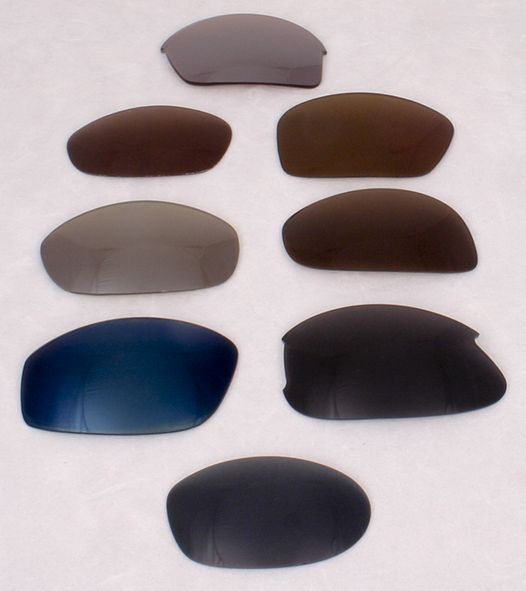
Lens Color
Gray lenses don’t distort natural colors much and, in conjunction with polarization, are good all-purpose lenses for boating. Amber and brown tints filter a large percentage of blue light, which help improve contrast and sharpen details. They are ideal for low-light situations encountered in haze and fog. Similarly, a copper tint will enhance contrast in hazy light while maintaining good color fidelity.
In our evaluations, testers concluded bronze-brown polarized lenses with between 10 and 14 percent light transmission were good for eyeball navigation in shallow waters on overcast or partly cloudy days, when shadows and low light make spotting reefs difficult.
Polarization
Polarization will cost you a bit more, but its function—reducing glare—is well worth it. As any angler will tell you, polarized lenses allow you to see deeper beneath the surface of the water, key to spotting reefs. Polarization also fights eye fatigue.
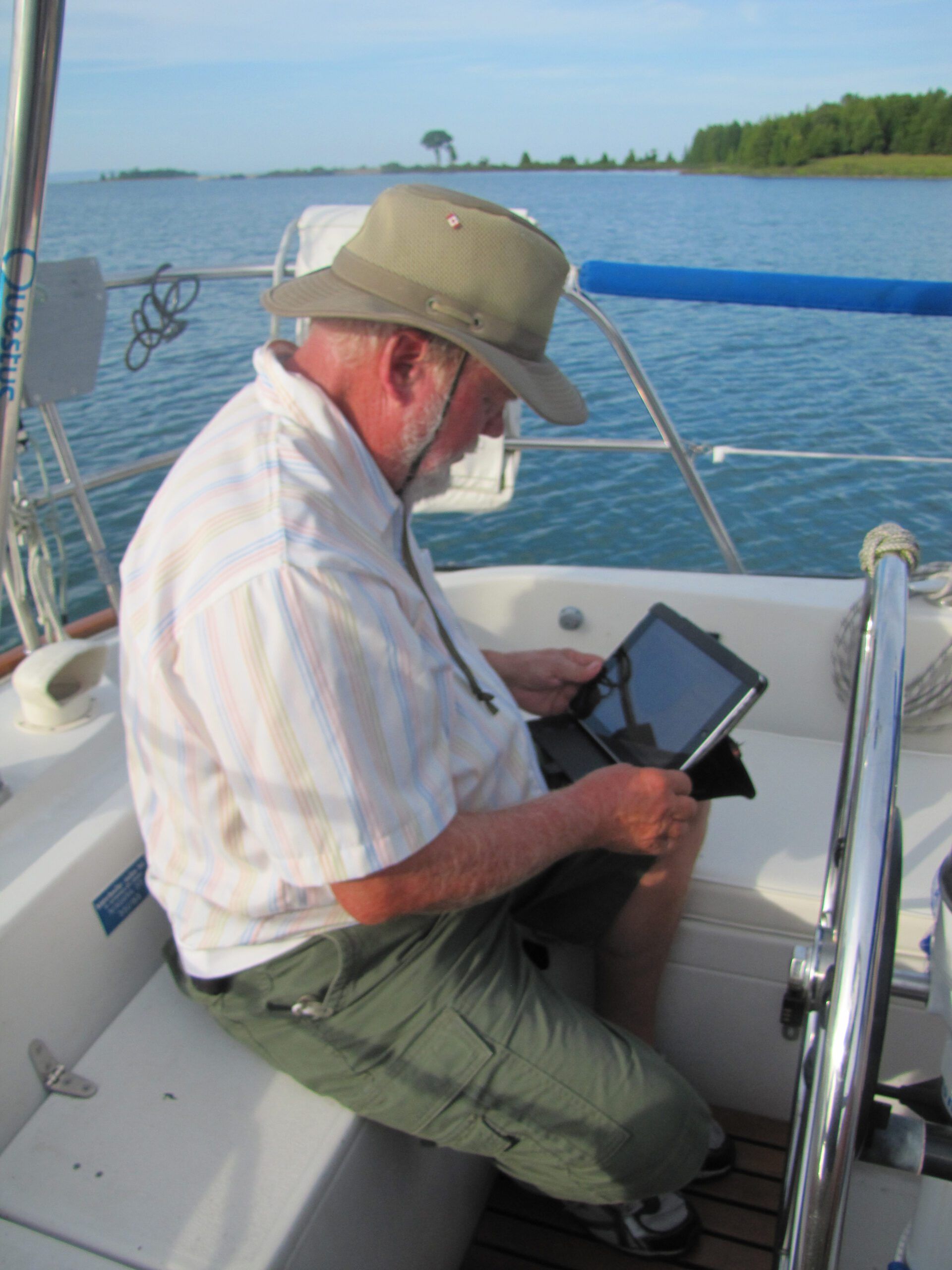
LCD Screens
The drawback of polarization is that it interferes with reading screens on personal devices and plotters. We found that the best LCD screen-readers were the glasses that allowed in the most light (had the highest luminous transmittance), and were not polarized. Bifocals can also help, if not be necessary, for reading screens. When looking at an LCD through polarized sunglasses, tilt your head (or turn the display) about 45 degrees to one side, and it often will appear black; tilt it the opposite direction, and it often will appear brighter.
Anti-Reflective/Flash Coatings
Anti-Reflective Coating (ARC) reduces light reflection from both front and the back of lenses—so-called “bounce-back light” that’s not only distracting but also fatiguing. Early coatings on the front of lenses were criticized for their susceptibility to abrasion; newer flash coatings on more expensive glasses are often protected by a third “laminate.” We found that salt spray can damage the coatings on even the most expensive brands, so it is important to rinse any salt off immediately. The color of the flash coating is not necessarily linked to the color of the lens.
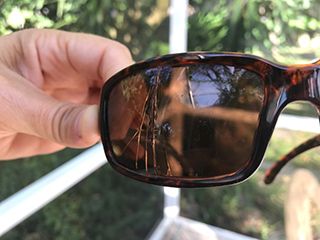
Warranties
Sunglasses warranties should be taken with a grain of salt. Probably our most frustrating test in recent years was our attempt to get warranty service on some big name sunglasses. In all but one case, we saved very little money and spent a whole lot of time trying to get replacements under the terms of warranties. Read your warranty when you buy. If something goes wrong with your product, read it again and manage expectations before contacting the retailer or manufacturer. At some point you have to decide if you’d rather be sailing in pair of modestly priced shades or battling customer service.
If you really want to dig into the topic of sunglasses, our archive of sunglass tests is a good place to start. And if you just want a set of cheap sunglasses that will protect your eyes and serve most onboard duties (except reef spotting because they are are not polarized), our Tech Editor Drew Frye is a fan of the Dewalt DPG59-220C Reinforcer bifocals, which he buys three at a time for about $12 apiece.
If you’ve got a favorite pair of inexpensive sunglasses that suit your needs (especially polarized), I’d love to hear about them at [email protected] or in the comments below. And if you are prone to dropping your glasses overboard, I recommend keeping a pair or two (different tints) of good quality polarized glasses on board and dedicate them exclusively to eyeball navigation, when you need the best optics.






































Hi Darrell,
After many years with expensive Ray-Bans on for the boat, I switched to RHEO’s and I am extremely satisfied.
Not sure what “nylon optics” means, but they float and advertise as polarized and 100% UV. They don’t slip down, are comfortable and light, and their wrap-around shape is also a plus shielding side light. It would be good to test if the characteristics of the optics meet what they claim.
Thanks for your great articles.
Carlos
For years I’ve suffered from headaches when being out in bright sunshine and especially when out on the water despite drinking plenty of water, fearing the headaches were caused by dehydration. I always was wearing polarizing sunglasses as well. I have worn prescription glasses since I was 12 already. A couple decades ago I was subjected to a complete, beyond the normal eye examination which revealed that I was extremely photophobic, meaning I was very sensitive to light. Maybe the reason I see so well at night…? At this time my optometrist was able to source a type of polarized lens from an Israeli company that supplied their lenses to soldiers serving in the desert. These are now widely accessible to optometrists in the US.. I have had maybe 2 headaches in those past 20 years wearing these lenses.
That is a nice pair.
Excellent article. I too would love to hear more about polarized, wrap-around brands that have good fitting frames that don’t slip down your nose.
WOULD’VE APPRECIATED ED WHITE LEAVING NAME ETC . OF HIS SUNGLASSES – HIS DESCRIPTION OF HIS SOUNDS AS IF THEY’D BE EXCELLANT FOR ME ( AND OTHERS ) .
Thanks Ed .
yes pls…